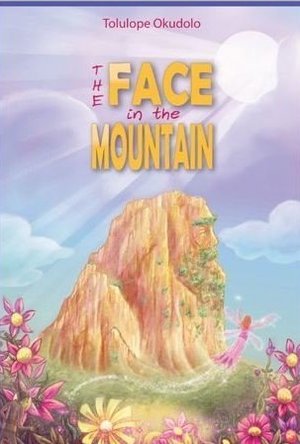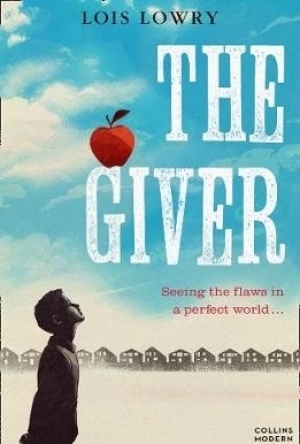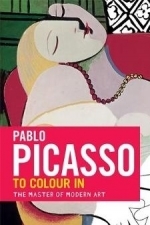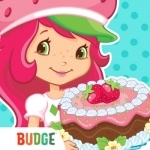
Strawberry Shortcake Bake Shop
Entertainment and Games
App
Budge Studios™ presents STRAWBERRY SHORTCAKE BAKE SHOP! Strawberry Shortcake is so excited to bake...

Strawberry Shortcake Dress Up Dreams
Entertainment and Games
App
Budge Studios™ presents Strawberry Shortcake Dress Up Dreams! You’re invited to Strawberry...
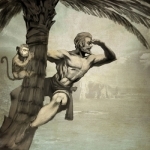
The Island:Brave Heart
Games and Sports
App
The Island,Man in the Wild,Amazing Adventure.... This is a game about exploring and surviving on a...
Hazel (1853 KP) rated The Face in the Mountain in Books
Dec 17, 2018
The Face in the Mountain </i>is a children’s picture book written by Tolulope Okudolo as part of the publishing company <i>Magnifying Children’s Horizons</i> vision of developing a world in which children learn about and appreciate nature.
The story is set in the fictional world of Vomper Creek where there is always an abundance of natural activity – that is if tree elves, giants and fairies count as “natural”. Papa and Boma are the only giants living in this area and are responsible for making sure nature does everything it is supposed to do. In fact it was Papa who built the mountains in this region to begin with. However Papa is old, frail and tired after working for over two hundred years. He needs to sleep for a century to regain his energy, thus leaving Boma, at a mere seven years of age, to take on all the important tasks.
So begins the main part of the story: Boma is scared and convinced he is unable to remember Papa’s instructions and tries to hide from all his duties. Without his help nature will not be able to function properly. Inspired by an artist he spies in the woods, Boma carves his father’s face into the side of one of the mountains so that he can always see it. This makes him feel less alone and he is able to complete all his jobs to perfection.
The purpose of this book is to help children discover the inner workings of nature and recognize that many things are connected together. For example the wind is needed to blow the seeds into places where they can sprout, then the rain, sun and soil provide the nutrients the plant needs to grow.
At the end of the story is <i>A Children’s Guide to Natural Beings</i>. This is essentially a glossary of the mythical beings featured in the book. The only issue with this is that calling them “natural beings” implies that they are real whereas there is no concrete evidence of their existence. This could give children the wrong impression about the way nature works.
The final pages of the book include a list of learning activities and discussion questions. These could be attempted in schools, in book clubs or at home with parents as a way for children to experience nature for themselves and examine the meaning of the story and the ways in which they can relate it to their own lives.
Eric Scott Fisher beautifully illustrates the book with realistic drawings that are appropriate for children of all ages. Yet there is a slight publishing issue in that the illustrations and body text do not work together. In some instances the text is overlaid on a picture, which makes it difficult to read.
The reading age of this book is approximately seven to ten year olds however younger children will be able to understand it if it is read to them by an adult. The storyline is not that strong but hopefully its purpose – to educate children about nature – will shine through the narrative.
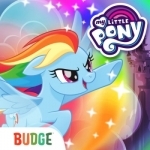
My Little Pony Rainbow Runners
Entertainment and Education
App
Budge Studios™ presents My Little Pony™ Rainbow Runners! A powerful color-stealing spell has...
I received this book for free through Goodreads First Reads.
It has been over twenty years since Lois Lowry’s controversial children’s story The Giver was published and it certainly deserves its status as an essential modern classic. Jonas has grown up in the perfect world of the Community whose survival relies on strict rules and rituals. Adults are assigned spouses and children (one boy and one girl) as they take up their role within the society. At the beginning of the book Jonas is approaching then end of his eleventh year and feeling apprehensive about the Ceremony of Twelve where he will be assigned a job for him to do for the rest of his adult life. Jonas gets selected as the Receiver of Memory – a very rare position – and begins to experience memories from humans who lived a long time ago. For Jonas this is exciting until he begins to see the flaws in his perfect world.
Dystopian literature has become popular over the past few years and it would not be surprising if it were The Giver that inspired these contemporary works. Lowry claims that she did not intend for The Giver to have a sinister feel about it; she was writing an adventure story and exploring the concept of the importance of memory, but it turned out to be something much more thought provoking. As the children’s novelist Margaret Mahy (The Haunting) pointed out, up until the publication of this novel in 1993 Lowry was best known for her funny stories about Anastasia Krupnik resulting in The Giver being even more shocking and unexpected.
The Giver highlights that attempting to produce perfection can often result in the loss of good things as well as the bad. The notion of the ideal world may seem like a wonderful proposal, but in order to achieve it humans would have to do away with free choice as in ironing out the inequalities and injustices of the present world would result in everything becoming the same for each individual.
This is a difficult concept to grasp, particularly for a child. Although intended as a children’s series, The Giver and its following installments are more suitable for young adults and older. The only issue with this is that the writing style was target at a younger audience meaning that the overall story is short and lacks depth. If it were to have been written for older readers then there would have been the scope for it to become a much lengthier novel.
There are a lot of mixed reviews surrounding this book although they have changed greatly since the original publication. To begin with The Giver was banned in some areas however the dystopian theme has become accepted in today’s society. What many people comment on now is the oversimplification of such strong ideas. Then again, as already mentioned, it needs to be emphasized that this book was aimed at children, thus the language reflects the reading skills of its target audience.
The Giver is a gem of a book that not only is enjoyable but also can educate the reader on the dangers of attempting a utopian society and why it is important to retain human memories – even the bad – in order that wisdom can exist. Those who have become fans of contemporary dystopian novels, for example Divergent by Veronica Roth or Delirium by Lauren Oliver, will be sure to love this series.
Hazel (1853 KP) rated Picasso: The Colouring Book in Books
Jul 15, 2017
...
Pablo Picasso: To Colour In was published in April 2016 with the intention of using the popular fad to educate readers/colouring book enthusiasts about the techniques and secrets of the great master. Each work included in the book has a brief paragraph explaining what it is (in case you cannot tell) and a few details about Picasso’s intentions or the events happening in his life at the time.
...
Naturally, it would be impossible to produce a book of all Picasso’s recorded works, but the editors of this particular colouring book have carefully selected examples that span the majority of his life, thus encompassing the different styles he experimented with.
The author of the text – presumably Frédérique Cassegrain, who also wrote the biography and information for each included artwork – gives helpful advice about how to colour in the outlined versions of Picasso’s paintings. The paper is thick enough to be suitable for paints, particular Gouache, which is water soluble and easily blended. Alternatively, coloured pencils may be used, preferably of artistic quality, which may be more suitable for those less confident in art and design. Another option, although not mentioned by the author, are felt-tip pens. Usually, these should be avoided due to ink bleeding through the page, however, the paper is single sided, so there is no chance of damaging the following colouring page in the book.
Purchasing Pablo Picasso: To Colour In and completing the book, provides not only hours of fun and relaxation, but an opportunity to discover and understand the artist. Unlike at a gallery where the brain may switch off, being able to go away and return to the book gives us time to absorb the information and concentrate more clearly on the details of each painting.
Opposite each colouring page is a copy of the original in full colour, meaning that, if one desired, one could replicate Picasso’s work as closely as possible. By doing, rather than just looking, we begin to understand the colour choices, piece together the geometric shapes to form an image and begin to understand the thought processes of the artist.
Interestingly, there are two paintings that stand out amongst all the others. These were produced during and after the First World War, a time when Picasso returned to a more classical style of artwork. These are The Pipes of Pan (1923) and The Bathers (1918). Both show a completely different side to Picasso and would not immediately be recognised as his own work. Despite not being entirely life-like, there are no elements of Cubism or Surrealism and the colour palette is altogether natural. Picasso has focused on shading and tone to create a realistic appearance, a contrast to the flattened portraits he is known for.
...
Pablo Picasso: To Colour In will appeal to artists, art historians and other creatives with its contrast of light relief and in-depth knowledge. The book is available online at retailers such as Amazon and The Book Depository from approximately £6. If Picasso is not your thing, there are other artists available in the series of colouring books, including Klimt, Hokusai (Japanese Art), Monet, Van Gogh, Caillebotte and Manet (Impressionists), and Paul Klee. Whatever your preference, prepare to learn whilst you are relaxing and having fun.
Hazel (1853 KP) rated Picasso: The Colouring Book in Books
Dec 7, 2018
...
<i>Pablo Picasso: To Colour In</i> was published in April 2016 with the intention of using the popular fad to educate readers/colouring book enthusiasts about the techniques and secrets of the great master. Each work included in the book has a brief paragraph explaining what it is (in case you cannot tell) and a few details about Picasso’s intentions or the events happening in his life at the time.
...
Naturally, it would be impossible to produce a book of all Picasso’s recorded works, but the editors of this particular colouring book have carefully selected examples that span the majority of his life, thus encompassing the different styles he experimented with.
The author of the text – presumably Frédérique Cassegrain, who also wrote the biography and information for each included artwork – gives helpful advice about how to colour in the outlined versions of Picasso’s paintings. The paper is thick enough to be suitable for paints, particular Gouache, which is water soluble and easily blended. Alternatively, coloured pencils may be used, preferably of artistic quality, which may be more suitable for those less confident in art and design. Another option, although not mentioned by the author, are felt-tip pens. Usually, these should be avoided due to ink bleeding through the page, however, the paper is single sided, so there is no chance of damaging the following colouring page in the book.
Purchasing Pablo Picasso: To Colour In and completing the book, provides not only hours of fun and relaxation, but an opportunity to discover and understand the artist. Unlike at a gallery where the brain may switch off, being able to go away and return to the book gives us time to absorb the information and concentrate more clearly on the details of each painting.
Opposite each colouring page is a copy of the original in full colour, meaning that, if one desired, one could replicate Picasso’s work as closely as possible. By doing, rather than just looking, we begin to understand the colour choices, piece together the geometric shapes to form an image and begin to understand the thought processes of the artist.
Interestingly, there are two paintings that stand out amongst all the others. These were produced during and after the First World War, a time when Picasso returned to a more classical style of artwork. These are The Pipes of Pan (1923) and The Bathers (1918). Both show a completely different side to Picasso and would not immediately be recognised as his own work. Despite not being entirely life-like, there are no elements of Cubism or Surrealism and the colour palette is altogether natural. Picasso has focused on shading and tone to create a realistic appearance, a contrast to the flattened portraits he is known for.
...
Pablo Picasso: To Colour In will appeal to artists, art historians and other creatives with its contrast of light relief and in-depth knowledge. The book is available online at retailers such as Amazon and The Book Depository from approximately £6. If Picasso is not your thing, there are other artists available in the series of colouring books, including Klimt, Hokusai (Japanese Art), Monet, Van Gogh, Caillebotte and Manet (Impressionists), and Paul Klee. Whatever your preference, prepare to learn whilst you are relaxing and having fun.

123 Kids Fun GAMES - Preschool Math&Alphabet Games
Education and Games
App
Preschool and Kindergarten Kids Educational Early Learning Adventure Games. Teach Me Counting,...
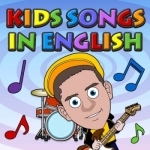
Kids Songs in English
Education and Music
App
Now you can take DreamEnglish.com’s Matt and his super-popular song videos with you wherever you...
